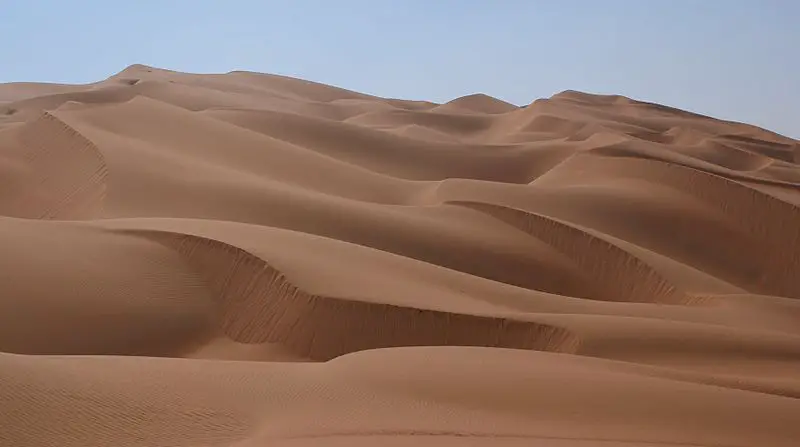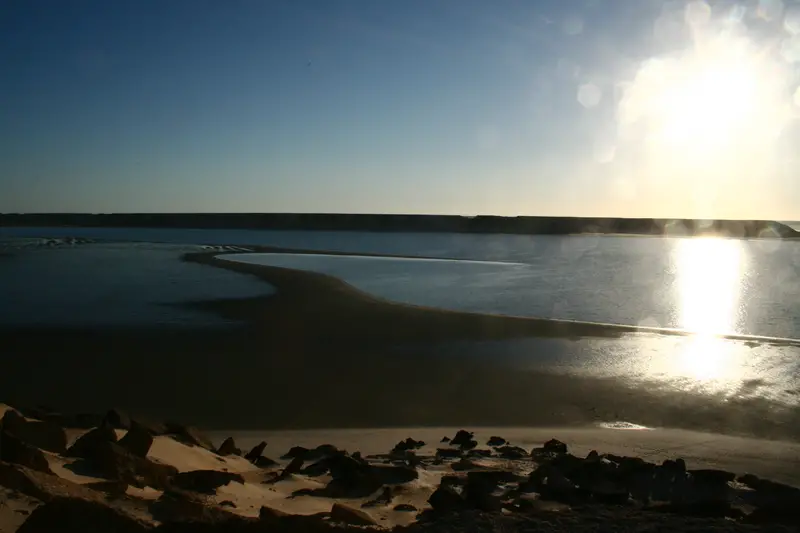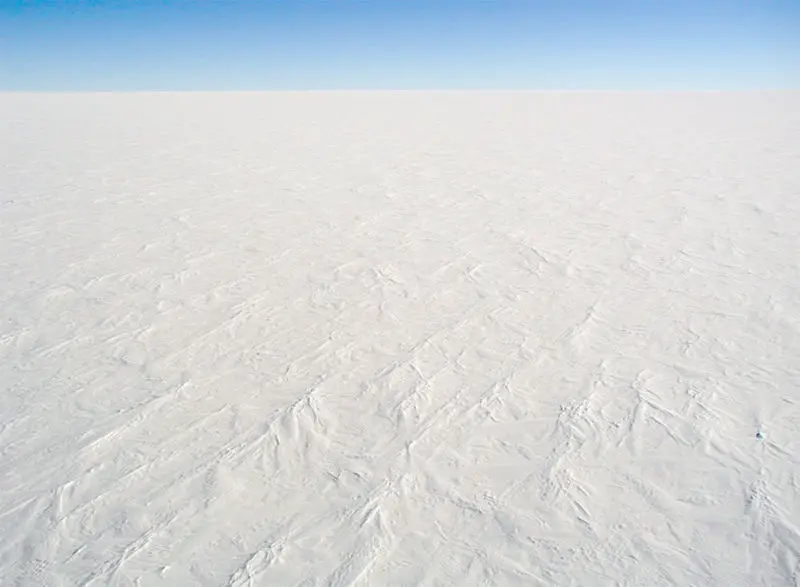When we think of deserts, we probably think of places like the Sahara, Gobi, or Mojave – large dry areas that are covered with sand and have little, if any, life. This is correct for the most part, but it doesn’t tell the whole story.
Desert biomes cover one-fifth of the Earth’s surface. In order to be considered a desert, a region needs to collect less than 25 centimeters of rain a year.

There are four types of deserts: hot and dry, semiarid, coastal, and cold.
Hot and Dry Desert
Hot and dry deserts usually have warm winters and very hot summers. These deserts have the most extreme temperatures during the day (extremes between 110 and 120 degrees Fahrenheit) and can have very cold nights.
Rainfall in hot and dry deserts is low and there are often large periods of time between rainstorms. Because of the heat, the rate of evaporation is very high, and rain can even evaporate before it ever hits the ground.
You might think these deserts are covered with sand, but that is not usually the case. The soil is often coarse and gravely. Sand is usually blown away.
Semiarid Desert
Semiarid deserts are like hot and dry deserts but not as extreme. Temperatures rarely go higher than 100 degrees Fahrenheit and nighttime temperatures are usually around 50 degrees Fahrenheit.
The milder temperatures mean that less water is evaporated than in hot and dry deserts. This allows for more plants and animals to survive in semiarid deserts.
Semiarid deserts are usually a mixture of gravel and sand.
Coastal Desert
Coastal deserts have cool winters and long, moderate summers. Summer temperatures are between 55-75 degrees Fahrenheit, with winter temperatures falling below 40 degrees Fahrenheit.
Coastal deserts receive more rainfall than semiarid or hot and dry deserts. They often average between 8-13 centimeters of rainfall a year.

The higher amount of rainfall causes the soil in coastal deserts to be fine-textured. This type of soil allows plants with large root systems to survive in the coastal desert.
Cold Desert
Cold deserts are true to their name. They have long, cold winters, where snowfall is common, and short moderate summers. Summer temperatures are between 70-80 degrees Fahrenheit, and winter temperatures are between 30-40 degrees Fahrenheit.

Of all of the deserts, cold deserts usually have the most precipitation – between 15-25 centimeters per year. Most of this is snow during the winter.
The soil in cold deserts is fine and salty. Cold deserts allow for the largest of desert friendly plants to survive.
Plants and Animals
Due to the little rainfall in deserts, the plants and animals that make their home there are usually very specialized.
Plants often have adaptations that allow them to maximize the amount of water they can absorb. Many plants, like cacti, have spines to protect themselves from being eaten by animals.
Animals in the deserts are often nocturnal. They come out when the sun comes down to avoid overheating and dehydration. Also, many animals burrow underground to keep cool.
Plants and animals are unique to the type of desert in which they inhabit. Most plants are smaller bushes and trees, like shrubs. Animals are often burrowers or jackrabbits. Reptiles, arachnids, insects, and birds can also be found in deserts.
Interesting Facts:
- Deserts are found on every continent
- Deserts can be found at both high and low altitudes
- The Sahara Desert can reach a temperature of 122 degrees Fahrenheit during the day
- The Atacama Desert in Chile averages less than 1.5 cm of rainfall a year